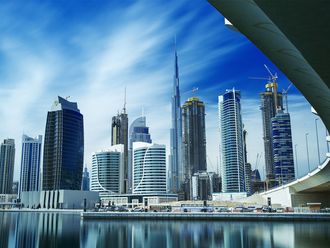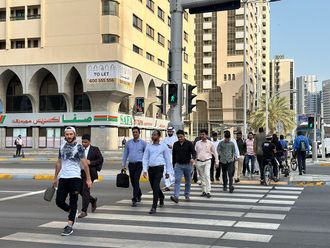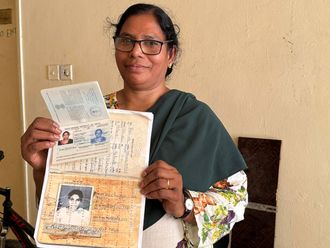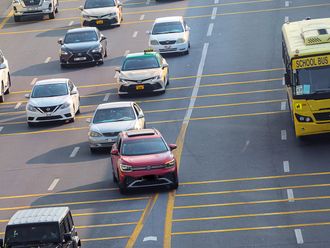
Al Ain: Old Sol is back.
And it’s that time of the year to limit your exposure to direct sunlight as the ultraviolet (UV) radiation of the sun has gone up to seasonal peak levels.
An hour-long exposure to sunlight is more than sufficient to suffer sunburn and other harmful effects in peak UV time, which in May, June, July, and August in the UAE usually occurs at noon, said Dr Abrar Ahmad, a physician in Al Ain.
Dr Ahmad said the radiation poses multiple threats to both humans and animals without proper protection, while the World Health Organisation (Who) has also declared it a major source of global diseases.
“I believe UV radiation is often neglected due to the lack of knowledge,” Dr Ahmad said. “People must be aware that they face a medium- to high-risk of ultraviolet radiations from the sun in the summer months. Prolonged exposure to solar UV radiation may result in acute and chronic health effects on skin, eye and immune system of both humans and animals.”
Dr Riaz Ahmad, a physician at the Emirates Clinic and Medical Centre in Al Ain, said unprotected human eyes and skin could suffer from permanent damage or severe sunburn from UV rays, with skin the most vulnerable part of body.
He said: “UV radiation can play a contributory role in the development of ocular disorders such as cataract, pterygium, cancer of the skin around the eye, photokeratitis [the burning of the cornea due to excessive exposure to sunlight] and corneal degenerative changes, and may contribute to age-related macular degeneration.”
In one report, the Who said that UV-related illnesses and deaths have been on the rise across the world, with an estimated 60,000 deaths a year due to exposure to UV rays. Some 48,000 deaths are caused by malignant melanomas and 12,000 by skin carcinomas, the report said.
Both doctors recommended that people of all ages, particularly children, must wear sunglasses between 12pm to 3pm and use sunblock to protect exposed skin before going out in the open. They said this was particularly important for children, labourers and the elderly. The doctors also considered fishermen and beachgoers among those at high risk since sunlight and UV rays reflect off the water, creating a greater risk of exposure.
Adil Hassan, a meteorologist, said that UV rays are produced by the sun but most of them are absorbed in the ozone layer around the earth. However, some of the rays filter through the ozone in summer months.
He said that this radiation starts increasing in May in the UAE and reaches the maximum levels in July and August. It goes down to the minimum levels in the month of December, he said.
Hassan said there is a need to develop a seasonal UV index, like the weather comfort index, to provide important information and guidelines to help people and companies plan outdoor work and prevent unnecessary over-exposure.












